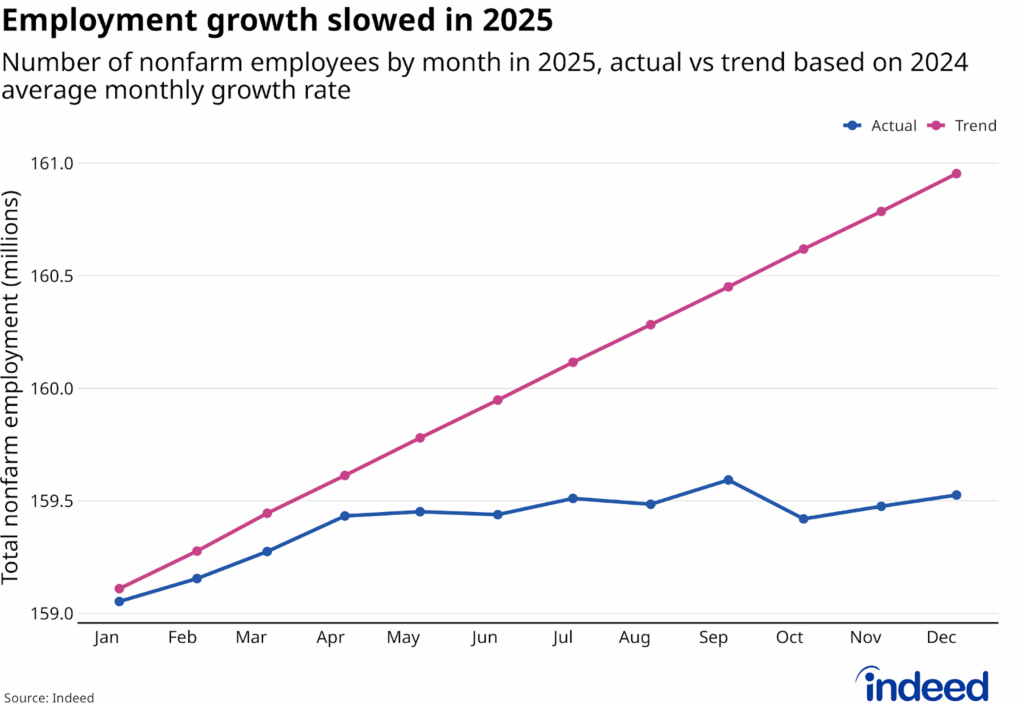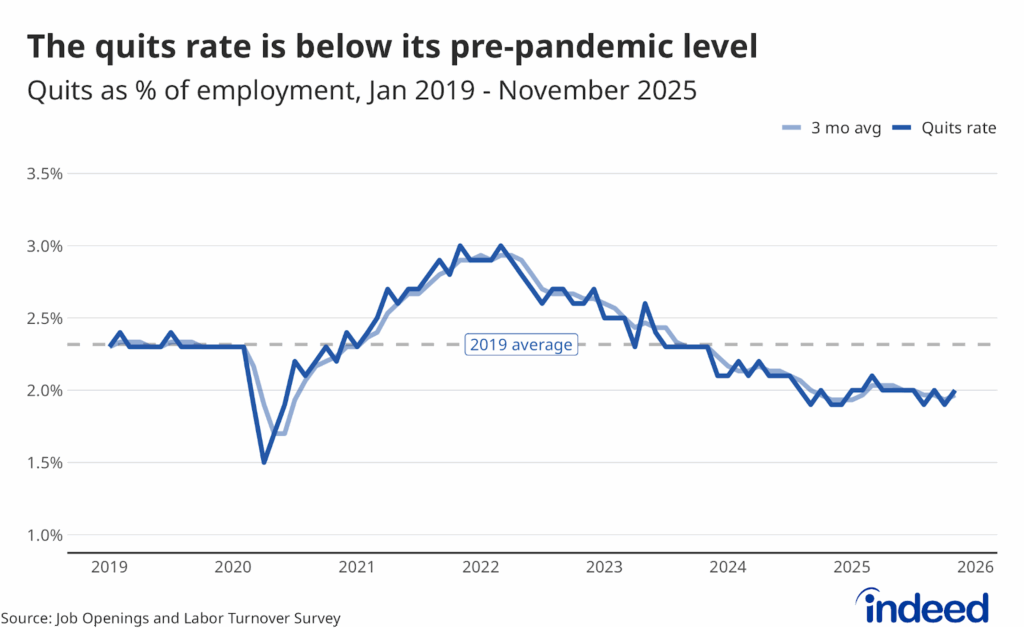Key Points
- The share of the population ages 18 to 64 actively looking for paid work rose by two percentage points from the previous month, according to the January 2022 edition of the Indeed Job Search Survey.
- All of the rise in January was driven by an increase in ‘non-urgent’ job search among the employed, potentially reflecting some start of the year exploratory job search. At the same time, urgent job search among the jobless continues to trend upward.
- The average job seeker is still more likely to want to start immediately than they were in June, as job seekers are likely enticed by the higher wages on offer.
- The reasons for a lack of urgency among the unemployed remained varied, with the top reasons in January being employed partners, financial cushions, COVID fears, and care responsibilities.
Active job search rose from a month prior, according to the January 2022 edition of the Indeed Hiring Lab Job Search Survey. However, this rise might not be as encouraging as it seems at first glance.
January is usually a time when job search picks up. Given that this is the first January edition in our survey, which began in late May 2021, an increase in job search of this size might be routine. Furthermore, all of the rise in active job search in January came from employed workers who said their job search wasn’t urgent. Job search among the jobless has increased since October, but did not improve in January. The surge in COVID19 cases from the omicron variant was gripping the country when this survey was conducted. Job search, particularly among the jobless, may pick up even more in the months ahead if cases continue to decline.
Active job search rises in January
The January survey found 31.6% of respondents were actively looking for paid employment, up more than two percentage points from 29.5% in December. This share is up from its October level of 27.1%, after slipping from September to October. Notably, all of the increase in active search in January was of the ‘non-urgent’ variety, although the increase since October is roughly balanced.
All of the increase in January was among the employed
Not only was the rise in job search entirely fueled by non-urgent search, the increase was entirely concentrated among the employed. The share of jobless respondents actively looking for work in January was statistically indistinguishable from its December level, while the share among the employed rose by 2.6 percentage points.
The concentration of the January increase is even more stark when looking at the intersection of employment status and job search urgency. The entire increase in active job search in January was non-urgent search among the employed. Perhaps job seekers who don’t desperately need a job as they already have one are putting out some feelers for a new job as 2022 begins.
The desire to start a new job right away was unchanged from December
The share of active job seekers who want to start a new job right away ticked down in January, but the change wasn’t statistically significant. Some 66.8% of job seekers said they wanted to start immediately, roughly equal to its September level.
Reasons for lack of urgent job search
Non-urgent job search among the jobless was unchanged in January and the reasons for the lack of urgency didn’t differ much from the month prior. The top reasons this month were employed partners, financial cushions, and COVID fears.
The Indeed Hiring Lab polled 5,000 people in the US in January, ages 18-64. The surveys have been conducted monthly since late May. The samples include individuals in and out of the labor force, and employed and jobless people.
The Hiring Lab will monitor this trend and others in future installments of the Job Search Survey.
Methodology
This blog post is based on four online surveys of 5,000 US adults ages 18-64. The first survey was conducted May 26-June 3, the second July 12-20, and the third August 10-18, the fourth from September 13 – 29 and fifth from October 11-20 and the sixth from November 8 – 18 the seventh from December 6 – 22 and the most recent from January 10 – 24. Weights were applied to each survey to match respondent distributions across age, educational attainment, race/ethnicity, and sex with the 2020 Current Population Survey’s Annual Social and Economic Supplement.
Statistically significant differences between the surveys depend upon the exact question and the specific survey wave. For example, between the January and December surveys, a difference of at least 1.3 percentage points is required for a change in the share of the population that is actively and urgently searching to be statistically significant at the 5% level. A change in the share of active job seekers who want to share a job immediately between the January and December surveys would have to be at least 3.3 percentage points to be statistically significant at that same level.






